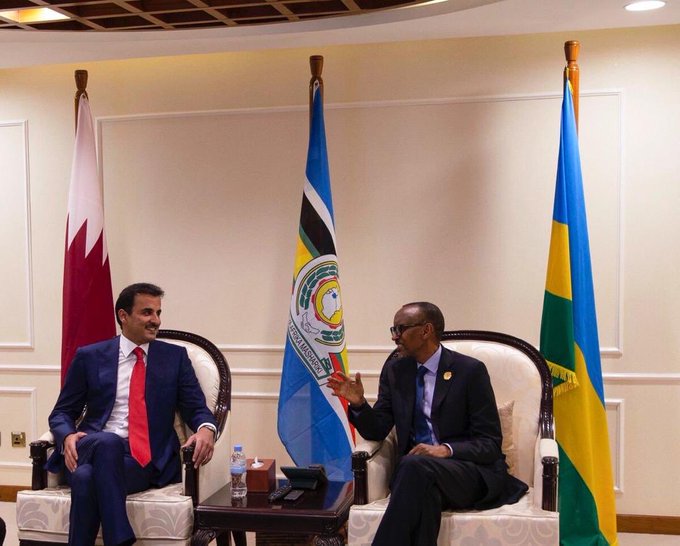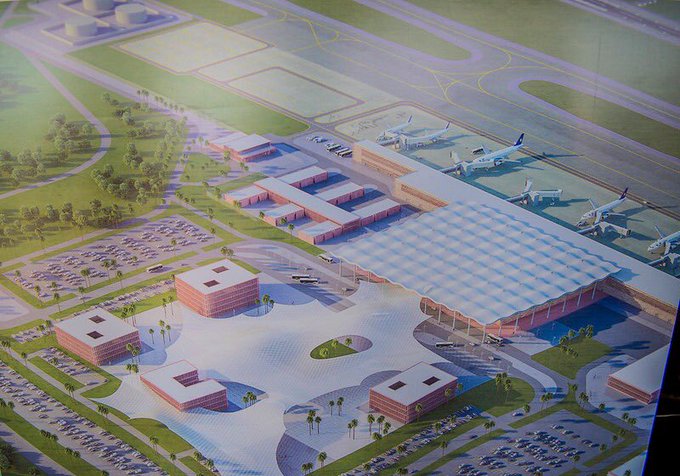Tanzania and Rwanda in push to reshape East African logistics
NoireTv Africa
If you live in the USA, NoireTV now showing nationwide on Verizon Fios on channel 269. Press 269 on your remote control. NoireTV now on Verizon Fios Channel 269. Press 269 on your remote control. Follow us on Instagram @noiretvafrica and on Facebook ... www.facebook.com/caspennoire
Rwanda and Tanzania individually signed two mega-infrastructure deals in the last week in moves that will undoubtedly reshape the East African region politically and economically. Kenya stands to lose most.
Tanzania signed an agreement to link its new railway line to Burundi and the DRC, while a similar deal with Rwanda is said to be in its final stages.
The transport ministers of the three countries signed the deal in Kigoma, Tanzania, on 3 December.
Three-way funding
The first phase of the joint deal will start in Kigoma and end in Gitega, the capital of Burundi, 240km away. It will then be extended into eastern DRC.
Each country will have to get funding for its own section, Tanzania’s transport minister, Isack Kamwelwe, said at the signing ceremony.
- The first phase of Tanzania’s Standard Gauge Railway (SRG), covering 202km from Dar es Salaam to Morogoro, is almost complete.
- The second phase will connect Morogoro to the administrative capital of Dodoma, even as the East African country also revamps its old metre-gauge railway to enhance connectivity.
- When complete, the new railway line will cover 1,457km, connecting Dar and the Lake Victoria port city of Mwanza.
In May 2018, Rwanda and Tanzania agreed to redesign their joint railway plan, which will start at the Isaka dry port and end in Kigali, to use electric powered trains.
In late November, Tanzania’s President John Magufuli said that the two countries are in the final phases of negotiating a deal to build the railway line.
- The Isaka-Kigali line will cost $2.5bn, with Tanzania paying $1.3bn and Rwanda $1.2bn. Rwanda will then incur additional costs to extend it to Rubavu and Bugesera, where it is constructing its largest international airport.
Kenya’s preeminence under threat
The deals give Tanzania an upper hand in East Africa, as its Central Corridor blueprint will make its commercial capital of Dar es Salaam the primary route to the sea for the region’s landlocked nations.
It also shows the far-reaching effects of the collapse of the ‘coalition of the willing’, a loose grouping of three East African countries – Kenya, Rwanda and Uganda – that had agreed in 2013 to construct mega-infrastructure deals together.
- The coalition collapsed as diplomatic relations between Uganda and Rwanda worsened, and Tanzania’s new president, John Magufuli, worked to rebuild economic relations with the country’s neighbours.
Uganda is Kenya’s trade route to Rwanda and eastern DRC, and the frosty relations between the two, which saw border closures, affected trade in the region.
The biggest beneficiary has been Tanzania, which shares direct borders with Rwanda, Burundi, the DRC, and Uganda.
Uganda chose the Tanzania route to the sea, abandoning the plan to build an oil pipeline jointly with Kenya. It cited, among other reasons, the costs of land compensation in Kenya.
Rwanda also pulled out of the railway line plan because, as its then finance minister, Claver Gatete (now minister of infrastructure), said: “The Kenyan route would be expensive and time consuming.”
Rwanda has also inaugurated an $80m inland port, built by Emirati DP World, 20km from the capital, Kigali.
Meanwhile, Rwanda announced that it had signed a deal with Qatar Airways, which will see the Gulf airline take up 60% of the redesigned Bugesera International Airport project.
- It is still unclear what will happen to the preceding deal with Mota-Engil of Portugal, which began works on the airport two years ago with a concession to run it for 25 years – and an option to extend by another 15 years.
Before the redesign, the project cost was $800m and a capacity of 4.5 million passengers, with the first phase due to be complete by early 2020.
- Mota-Engil had injected $418m into the first phase by March, when media reports indicated the company could be pulling out due to contractual issues.
- Mota-Engil’s likely pullout will make it the second company to withdraw from the project, after a Chinese state construction firm in 2013.
In addition promising the greenest airport on the continent, Rwanda now plans for Bugesera to be one of the largest airports in the region.
In the redesign the first phase, valued at $1.3bn, will accommodate seven million passengers, while the second phase, which will start by 2032, will increase the capacity to 14 million, the Rwanda Development Board said in a series of tweets on 9 December.
The @RwandaGov and @qatarairways today signed an investment partnership for Rwanda’s new international airport. The partnership features three agreements to build, own, and operate the state-of-the-art facility. #InvestInRwanda
.@qatarairways has agreed to take a 60% stake in the project, which as a whole is valued at around US$1.3 billion. The new airport is being redesigned to accommodate 7 million passengers per year, with a 2nd phase for 14 million passengers a year expected to start by 2032.
83 people are talking about this
As East Africa begins a new decade, Kenya’s dwindling position as East Africa’s trade hub will face even more competition from Tanzania and Rwanda.
Bottom line:
While Tanzania is working to make its corridor the natural route to the landlocked countries, Rwanda has been working to centre itself as a conference and events hub. The new deals bring them closer to this future, even as they iron out their financing models.
Source: The Africa Report







Comments
Post a Comment